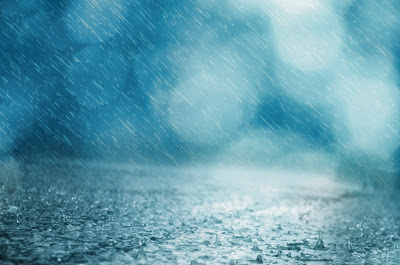Gary Gygax famously wrote that Dungeon Masters must keep careful track of time in their campaign, for ensuring that player resources were being used, for tracking for wandering monsters/encounters, and for determining player movement.
One of the things that some wargame referees/players will do is include the effects of weather into their campaigns and games. It makes a difference – ask the French or German armies about attacking Russia during rainy/snow seasons.
Now put the two together…
I track the weather as carefully as I track time in my campaign world. I don’t (as yet) have some sort of climate model, that is far too much work and brainpower for me to engage in (right now). What I do have is a weather chart for the northern and southern climes of my campaign world, inspired by the books “The Solo Wargaming Guide” by William Silvester and “Ancient Wargaming, Setting Up a Wargames Campaign” by Tony Bath.
The questions for me have been:
- How do I account for rain/snow in a consistent manner?
- How do I translate the effects of weather at a wargame/strategic level down to the movement rates and effects at a 1-to-1 D&D level?
I’ve adopted Tony Bath’s approach for road types: Class 1 roads (think good Roman roads), Class 2 roads (dirt roads) and Country/Overland (which include trails and non-maintained roads. When there’s precipitation, the Class 2 and overland roads are affected. Eventually, they dry out. But how do I consistently track that?
I had used Tony’s method for precipitation affecting movement, but it felt clunky and didn’t feel consistent. As a result, I adopted this approach – at the wargame/hex level:
|
Precipitation
|
Effect
|
|
0 – .5
|
No effect
|
|
1 – 1.5
|
-1 Movement rate on Class 2/Overland
|
|
2 – 2.5
|
-2 Movement rate on Class 2/Overland
|
|
3
|
Class 2/Overland impassable. Class 1 bridges may be impassable. (1-2 on 1d6)
|
So how do I translate the effects down to a D&D level?
No effect and impassable are easy – you either can or can’t. At the strategic level, I track movement at a week scale, so a -1 for an individual rider or small group doesn’t seem to really matter so much. At the -2 level, I might cut down the overland movement rate by about a quarter. That would indicate that the country or dirt roads are starting to get rough.
For missile fire or other things affected by precipitation at a D&D scale, if the week is a heavy rain/snow weather period, I roll a d6. If it’s a 1, then the weather is not happening bad enough to affect the action. Otherwise, missile fire is lessened to short range only.
I should also note that I don’t go for uber-realistic – more about consistency and the effect.

Weather has always been one of those tedious things that are better left to computers. I am lucky if I remember NPCs who are moving with the party, remembering to roll for weather? I try. The only time that I ever got weather to work was when I did it in advance, but now I have a player manage the calendar.
I like your approach, and love the effects. Much easier that what I have been doing.
Thank you! I will generate weather for a few weeks in advance so that it's a quick session. It's a fairly simple weather generation system, and even has a type of "smoothing" so that it's not violently random. And I keep track of the weather across the two "bands" in a central location so that if I've already generated weather for the North, say for wargames, and then my RPG game catches up, well, the weather is already generated. And vice versa…